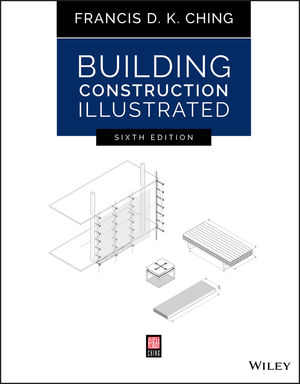Building Safety
Cladding Fire Tests Stir Worry Two Years After Grenfell Tower Tragedy
Do calorie measures matter as much as full-scale mock-ups?

The fire at the Grenfell Tower apartment complex in June 2017 has brought much attention to the use of composite panels in building cladding.
Photo: Peter Reina for ENR
Research since the Grenfell Tower tragedy, which killed 72 people in a London high-rise fire in June 2017, has failed to settle all the questions about building cladding and fire safety in the UK. Fire tests have triggered worries about another cladding material and raised questions about whether different tests should be considered similar sources of concern.
A year ago, the issues rose to new levels in the UK with the publication of a study by insurers who claimed that current fire safety measures were inadequate and failed to take account of numerous factors that contribute to the heat and spread of fire in buildings.
While the HPL panels had somewhat lower peak heat release rates than the polyethylene-aluminum composites, they were still 25 times greater than the least flammable panels
The recent questions center on high-pressure laminate, or HPL. It is used on thousands of buildings in the U.K. and in an unknown number of structures in the U.S., often for decorative purposes, such as trim on hotel balconies.
In an article published in the Journal of Hazardous Materials, a team of British researchers tested the polyethylene-aluminum composite panels used on Grenfell Tower, completed in 1974, and where a fast-moving fire raced up the exterior of the apartment tower. Composite sandwich panels with polyethylene and other types of plastic and non-plastic materials have been involved in several dramatic fires.
The British team also compared Grenfell-type panels to those using HPL, where the sandwich panel core is laminate, a different type of plastic made by heat and pressure treatment of resin-impregnated paper. The curing process transforms the resins, which are thermosets, into a single, rigid laminated sheet, which is then sandwiched with adhesive to other materials.
The research team, which included University of Central Lancashire fire-science professor Richard Hull, didn’t base its journal article research on tests of mock-ups or assemblies, which have been considered the most reliable way to study fire danger including flame spread. Instead, the team sought another perspective and studied the heat and calories resulting from the burning panels. It found that Grenfell-type panels showed 55 times greater peak heat release rates (pHRR) than the least flammable panels and 70 times greater total heat release (THR).
But the research found that HPL panels, in some cases, released even more heat.
While the HPL panels had somewhat lower peak heat release rates than the polyethylene-aluminum composites, they were still 25 times greater than the least flammable panels, Hull’s research found.
However, the HPL panels gave off dramatically higher levels of heat overall, with total heat release 115 times that of the least flammable panel, which was also much higher than the polyethylene-aluminum composites. Those had a THR level 70 times the least flammable panel, the study found.
The British research used an oxygen-bomb calorimeter, a test that involves lowering a pressured oxygen bomb containing samples of the materials to be tested into a container filled with deionized water. The sample of the material is ignited and the resulting increase in water temperature is measured to determine the heat/energy/caloric value.
The approach differs from more traditional fire tests in which a fire source put up against a mock-up of the panels being tested.
The UK’s Building Research Establishment, an industry supported research association with deep experience in fire safety, began testing composite panels after the Grenfell Tower fire. So did other fire research organizations. After tests were made using the oxygen-bomb method, at least one UK scientist said the oxygen-bomb method was problematic since it does not represent a real-life simulation of how the materials might be used. Others, similarly, argued that tests of of a particular cladding design's final assembly are the best measure and source of information.
Mockups: Subject to Manipulation?
Pushing back, the authors of the recently publish UK study contend that tests on large-scale mockups can be changed or manipulated until a passing result is achieved.
The oxygen bomb method is also far less expensive, its supporters note, costing a few hundred dollars compared to tens of thousands for a large-scale mockup.
As for HPL, the recent UK study gave the material a failing grade in terms in terms of peak heat release and total heat release.
“It is apparent that none of the HPL_PF or HPL_FR screened systems would be expected to pass,” the study found.
The journal article stated that HPL is widely used in rainscreen systems on multi-story residential buildings. The authors estimate that as many as 6,000 buildings in the UK are clad in HPL or other materials with unsatisfactory fire resistance.
Amount of HPL Use In U.S. Unknown
There is no similar estimate for the use of HPL on buildings in the U.S. It is mostly commonly used for decorative purposes, such as balcony trim.
Robert Solomon, director for built environment, codes and fire protection systems at the National Fire Protection Association in the U.S., said NFPA is aware of the British research but has no plans to change its tests on the use of HPL and other combustible materials in buildings. “I think it’s an interesting piece of information to have," he said, referring to the UK oxygen-bomb tests, "but I don’t think it will change the way we approach.”
The NFPA test involves a two-story mock-up of the material or assembly in question with a window opening. A gas burner fuels the fire. “That is a very challenging test,” Solomon said.
While such mock-up tests cost $50,000 to $60,000 each, far more than an oxygen-bomb test, the amount is “a drop in the bucket” when talking about an $80-million to $100-million building, Solomon said.
Douglas Evans, a veteran fire safety expert in the U.S., called the NFPA’s façade test “sufficient,” saying he is not aware of any façade fires or losses that have occurred after being subjected to it.
Online Fire Risk Tool
In 2014, following several façade-related fire tragedies, NFPA conducted its own study. One outcome was creation of an online tool to help tower and building owners to spot combustible materials on their building and decide what to do about it.
While thousands of buildings across the world probably have HPL or other combustible materials, many owners simply aren’t expert enough on their own to identify a panel is made up of HPL or some other combustible material, Solomon said.
The online evaluation tool has photos and descriptions of HPL and other materials, as well as a way to gauge or calculate the risk level and various option to deal with it.
So far, 500 people across the world have used it. “In the real world, if you ask a building owner about that, you will get a blank stare,” Solomon said. “We tried to develop a tool that would help building owners or the code enforcement officials to figure out, ‘do I have this stuff?'"







